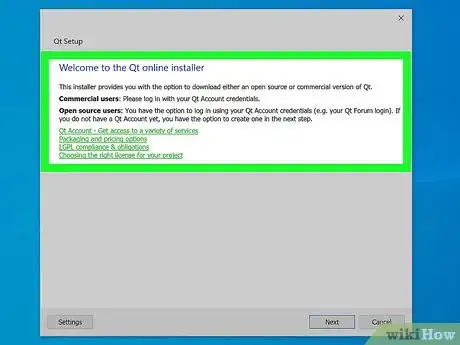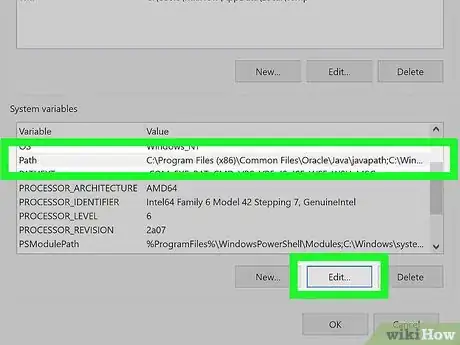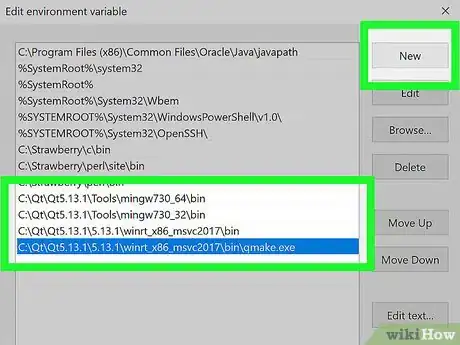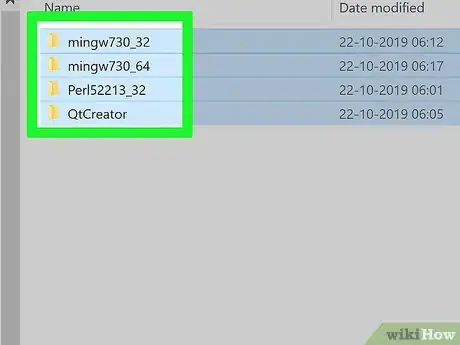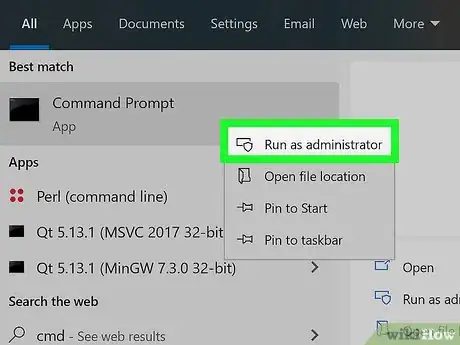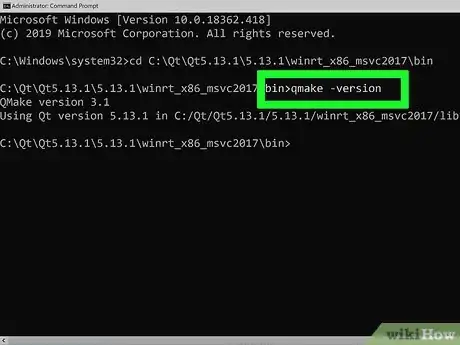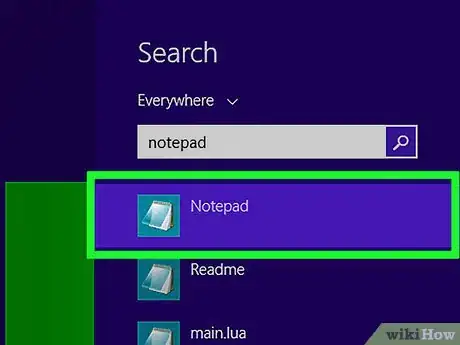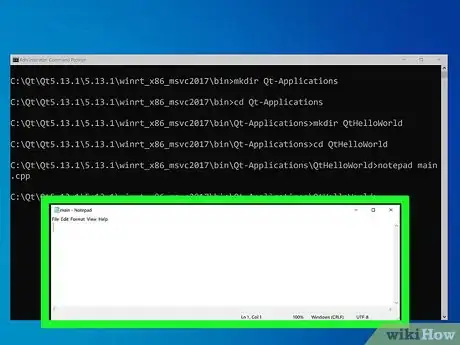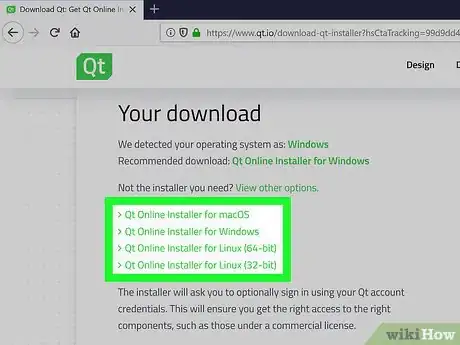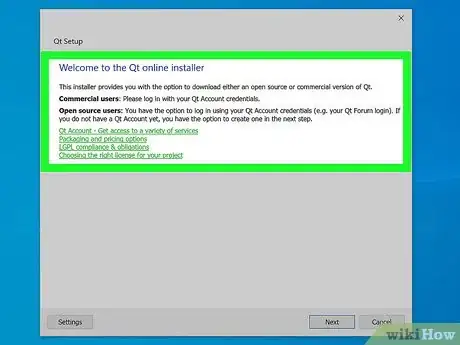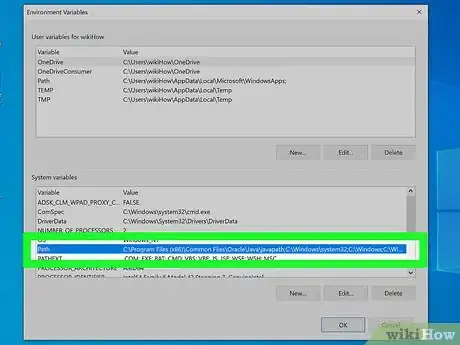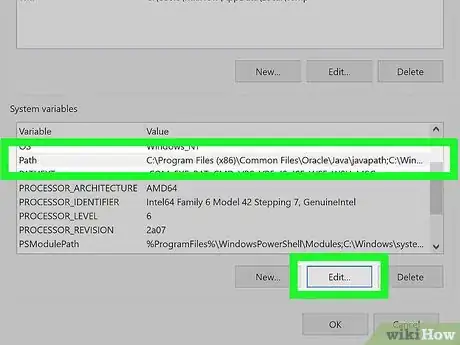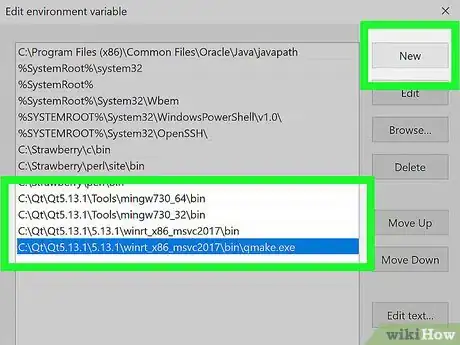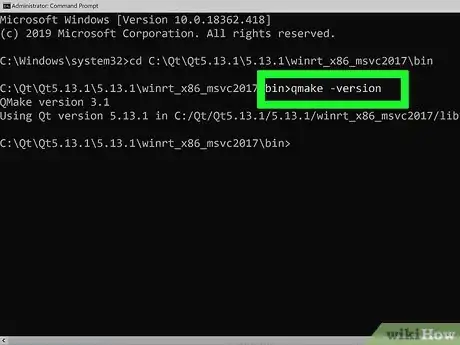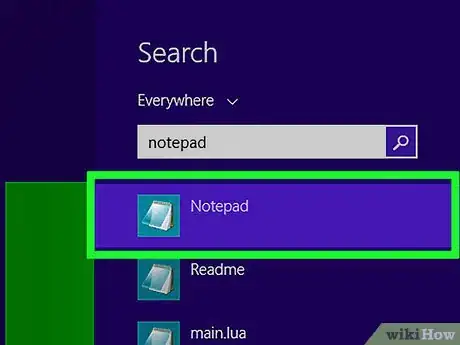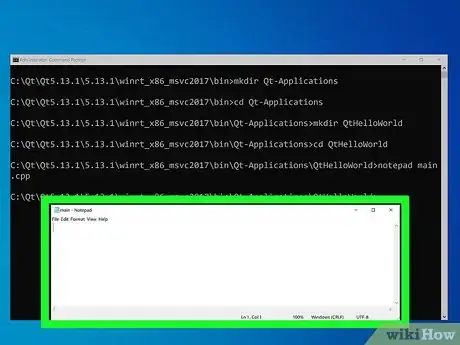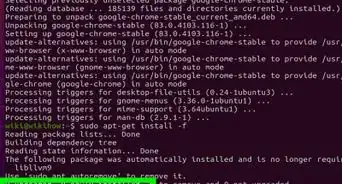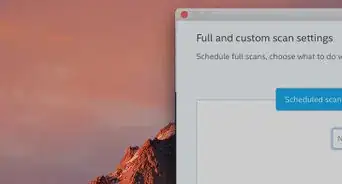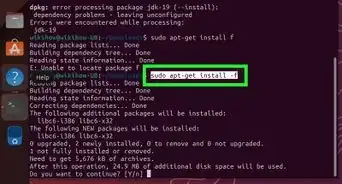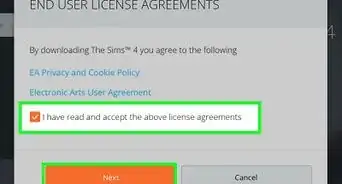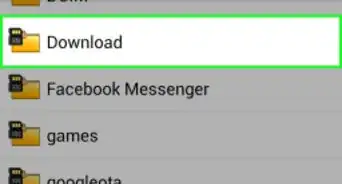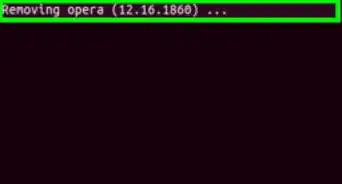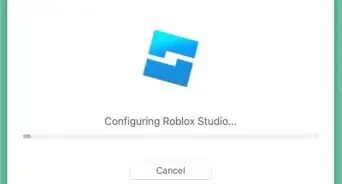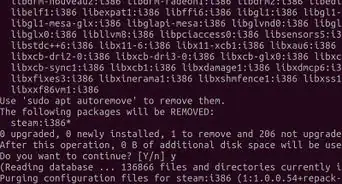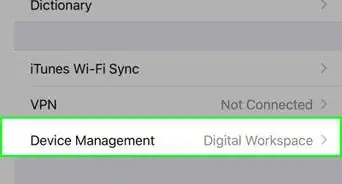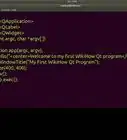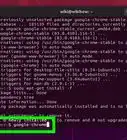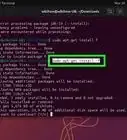X
wikiHow is a “wiki,” similar to Wikipedia, which means that many of our articles are co-written by multiple authors. To create this article, 11 people, some anonymous, worked to edit and improve it over time.
The wikiHow Tech Team also followed the article's instructions and verified that they work.
This article has been viewed 132,228 times.
Learn more...
The Qt software development kit (SDK)] is a cross-platform framework used for developing graphical user interfaces. We'll show you how to download, install, and run the QT SDK on a Windows PC, and how to add it to your system path in Windows 7 and 8.
Steps
Method 1
Method 1 of 6:
Qt 4.8 SDK Installation Instructions:
-
1In order to setup the development environment for the Qt SDK we will have to obtain the Qt SDK. Preparing your Windows operating system for Qt application development
- Download the Qt SDK. Select the Windows version and be prepared for a long download depending on your Internet speed. I would suggest you select the off-line installation of the Qt SDK if you do not have a very fast internet connection. The complete Qt SDK for the Windows operating system is 1.7 GB which can take over 6 hours on a slow connection.
-
2Install the Qt SDK by clicking on the Qt SDK executable. Once the Qt SDK executable is installed you will need to edit the Windows system PATH so that the Windows operating system can find the Qt commands from the command line. Be careful editing your Windows system PATH.
Advertisement
Method 3
Method 3 of 6:
Edit the Windows 8 PATH:
-
1Follow the steps below.
- Click on the Folder icon located on the bottom task bar next to the Internet Explorer icon
- Scroll down to Computer
- Right click with your mouse on Properties
- Click on Advanced System Setting
- Click on Environmental Variables
- Click on PATH to edit system wide variables
- Click OK when finished
-
2Add the following to the Windows system PATH
- Type/Copy/Paste: ;C:\QtSDK\mingw\bin;C:\QtSDK\Desktop\Qt\4.8.1\mingw\bin;
- this will set and notify the Windows operating system to compile Qt SDK applications from the command line. The numbers 4.8.1 denote the version number of the Qt SDK which changes with each new upgrade of the Qt SDK, substitute the new version numbers for your Qt SDK version number.
-
3Important: You want to use the version of MinGW included with the Qt SDK in order to build your Qt applications.If another version of the MinGW compiler is installed on the Windows system PATH such as ;C://MinGW/bin you will have to remove it and add the Qt version of MinGW which is included in the Qt SDK. This is critical if you have another version of the MinGW C/C++ compiler installed on your Windows system you must remove the other MinGW from the Windows system PATH, because this will cause conflicts with the Qt version of MinGW and your Qt applications will not compile and build correctly from the command line properly. Essentially, if you use another version of the MinGW C/C++ compiler your Qt applications you create from the command line will crash and exit with multiple system error messages. You must use the version of MinGW C/C++ compiler included with the Qt SDK.
-
4Once the Qt SDK system PATH has been added to the Windows operating system. To check if you have the ability to compile from the Windows command line, open up a command line prompt and issue the following command below.
-
5Type/Copy/Paste: qmake -version
- You should receive a response similar to this:
- 'QMake version 2.01a
- 'Using Qt version 4.8.1 in C:\QtSDK\Desktop\Qt\4.8.1\mingw\lib
-
6Develop your applications from the command line by using a text editor such as Notepad or WordPad to create and edit the source code and compile your Qt applications from the command line.
-
7Once the Qt SDK is added to the system PATH using the instructions above you can now compile your applications from the command line using the following method by running the following commands. Open up a command line prompt and enter the following commands below.
- Type/Copy/Paste: mkdir Qt-Applications
- Type/Copy/Paste: cd Qt-Applications
- Type/Copy/Paste: mkdir QtHelloWorld
- Type/Copy/Paste: cd QtHelloWorld
-
8While in the QtHelloWorld directory, use a text editor such as Notepad or Wordpad to create your Qt source code type the following
- Type/Copy/Paste: notepad main.cpp
- make sure you save the Qt source code file as main.cpp
- or
- Type/Copy/Paste: start wordpad
- using Wordpad as a text editor you will manually have to save the Qt source code file as main.cpp
-
9Create the application in the notepad or wordpad text editor, enter the following below
- Type/Copy/Paste:
Advertisement
#include <QApplication>
#include <QLabel>
#include <QWidget>
#int main(int argc, char *argv[ ])
{
QApplication app(argc, argv);
QLabel hello("<center>Welcome to my first WikiHow Qt program</center>");
hello.setWindowTitle("My First WikiHow Qt Program on Windows");
hello.resize(400, 400);
hello.show();
return app.exec();
}
- Save the source code file as main.cpp
- While in the QtHelloWorld directory run the following to compile and link the Qt source code
-
Type/Copy/Paste: qmake -project
- this will create the Qt project file
-
Type/Copy/Paste: qmake
- this will prepare the Qt project file to be compiled
-
Type/Copy/Paste: make
- this will compile the Qt source code into an executable program
- Once the above tasks have been successfully performed and there are no errors The Qt application will be created in the QtHelloWorld debug folder as an executable ending in .exe Change into the debug folder and execute the Qt application by either clicking the application or running the Qt application from the command line.
-
Type/Copy/Paste: cd debug
- change into the debug folder
-
Type/Copy/Paste: QtHelloWorld.exe
- and run the newly created executable
- Congratulations you just compiled your Qt application from the command line on Windows.
Method 4
Method 4 of 6:
Qt 5.0 SDK Installation Instructions:
-
1In order to setup the development environment for the Qt SDK we will have to obtain the Qt SDK. Preparing your Windows operating system for Qt application development
- Download the Qt SDK. Select the Windows version and be prepared for a long download depending on your Internet speed. I would suggest you select the off-line installation of the Qt SDK if you do not have a very fast internet connection. The complete Qt SDK for the Windows operating system is 1.7 GB which can take over 6 hours on a slow connection.
-
2Install the Qt SDK by clicking on the Qt SDK executable. Once the Qt SDK executable is installed you will need to edit the Windows system PATH so that the Windows operating system can find the Qt commands from the command line. Be careful editing your Windows system PATH.
Advertisement
Method 6
Method 6 of 6:
Edit the Windows 8 PATH:
-
1Follow the steps below.
- Click on the Folder icon located on the bottom task bar next to the Internet Explorer icon
- Scroll down to Computer
- Right click with your mouse on Properties
- Click on Advanced System Setting
- Click on Environmental Variables
- Click on PATH to edit system wide variables
- Click OK when finished
-
2Add the following to the Windows 8 System PATH
- Type/Copy/Paste:;C:\Qt\Qt5.0.2\5.0.2\mingw47_32\bin;C:\Qt\Qt5.0.2\Tools\MinGW\bin;
- this will set and notify the Windows operating system to compile Qt SDK applications from the command line. The numbers 5.0.2 denote the version number of the Qt SDK which changes with each new upgrade of the Qt SDK, substitute the new version numbers for your Qt SDK version number.
-
3Important: You want to use the version of MinGW included with the Qt SDK in order to build your Qt applications.If another version of the MinGW compiler is installed on the Windows system PATH such as ;C://MinGW/bin you will have to remove it and add the Qt version of MinGW which is included in the Qt SDK. This is critical if you have another version of the MinGW C/C++ compiler installed on your Windows system you must remove the other MinGW from the Windows system PATH, because this will cause conflicts with the Qt version of MinGW and your Qt applications will not compile and build correctly from the command line properly. Essentially, if you use another version of the MinGW C/C++ compiler your Qt applications you create from the command line will crash and exit with multiple system error messages. You must use the version of MinGW C/C++ compiler included with the Qt SDK.
-
4Once the Qt SDK system PATH has been added to the Windows operating system. To check if you have the ability to compile from the Windows command line, open up a command line prompt and issue the following command below.
-
5Type/Copy/Paste: qmake -version
- You should receive a response similar to this:
- 'QMake version 3.0
- 'Using Qt version 5.0.2 in C:\Qt\Qt5.0.2\mingw\lib
-
6Develop your applications from the command line by using a text editor such as Notepad or WordPad to create and edit the source code and compile your Qt applications from the command line.
-
7Once the Qt SDK is added to the system PATH using the instructions above you can now compile your applications from the command line using the following method by running the following commands. Open up a command line prompt and enter the following commands below.
- Type/Copy/Paste: mkdir Qt-Applications
- Type/Copy/Paste: cd Qt-Applications
- Type/Copy/Paste: mkdir QtHelloWorld
- Type/Copy/Paste: cd QtHelloWorld
-
8While in the QtHelloWorld directory, use a text editor such as Notepad or Wordpad to create your Qt source code type the following
- Type/Copy/Paste: notepad main.cpp
- make sure you save the Qt source code file as main.cpp
- or
- Type/Copy/Paste: start wordpad
- using Wordpad as a text editor you will manually have to save the Qt source code file as main.cpp
-
9Create the application in the notepad or wordpad text editor, enter the following below
- Type/Copy/Paste:
Advertisement
#include <QApplication>
#include <QLabel>
#include <QWidget>
#int main(int argc, char *argv[ ])
{
QApplication app(argc, argv);
QLabel hello("<center>Welcome to my first WikiHow Qt program</center>");
hello.setWindowTitle("My First WikiHow Qt Program on Windows");
hello.resize(400, 400);
hello.show();
return app.exec();
}
- Save the source code file as main.cpp
- While in the QtHelloWorld directory run the following to compile and link the Qt source code
-
Type/Copy/Paste: qmake -project
- this will create the Qt project file
- However, in Qt 5.0 SDK you must use a text editor and add the following to your generated *.pro file, use a text editor such as nano or gedit and issue the following commands:
- Type/Copy/Paste: notepad QtHelloWorld.pro
- Your generated QtHelloWorld.pro should look similar to this:
TEMPLATE = app
TARGET = QtHelloWorld
#INCLUDEPATH += .
# Input
SOURCES += main.cpp
- Edit your generated QtHelloWorld.pro file to look like this:
TEMPLATE = app
TARGET = QtHelloWorld
QT += core gui
QT += widgets
#INCLUDEPATH += .
# Input
SOURCES += main.cpp
- Once you add the following lines to the QtHelloWorld.pro file under the TARGET keyword, then run qmake
- Type/Copy/Paste: QT += core gui
-
Type/Copy/Paste: QT += widgets
- Save the file and exit
-
Type/Copy/Paste: qmake
- This will create the Qt make file
-
Type/Copy/Paste: make
- This will compile the Qt make file on your system into an executable program. At this point, providing that there are no errors the file should compile into an executable program.
- Once the above tasks have been successfully performed and there are no errors The Qt application will be created in the QtHelloWorld debug folder as an executable ending in .exe Change into the debug folder and execute the Qt application by either clicking the application or running the Qt application from the command line.
-
Type/Copy/Paste: cd release
- change into the release folder
-
Type/Copy/Paste: QtHelloWorld.exe
- and run the newly created executable
- Congratulations you just compiled your Qt application from the command line on Windows.
About This Article
Advertisement

